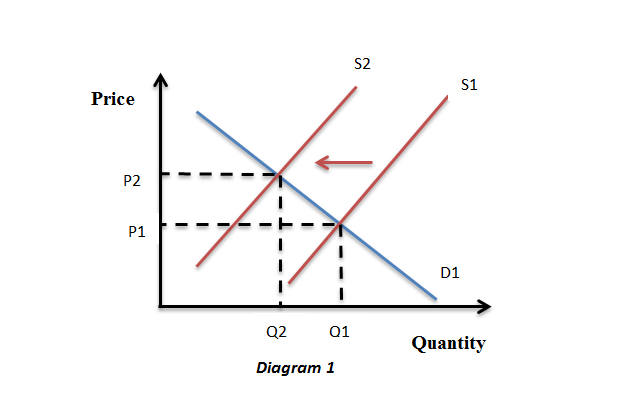
Antenna Factor (or correction factor) is defined as the ratio of the incident Electromagnetic Field to the output voltage from the antenna and the output connector. A general rule of thumb is to increase the makeup gain until the level coming out is equal to the level going in. Or, you can push the makeup gain even more to get more overall level out of a track.

A compressor doesn’t begin compressing until the input signal goes above its threshold. For example, if we set a compressor’s threshold to -18 dB, nothing below -18 dB will trigger the compressor. Any sound louder than -18 dB will then tell the compressor to start applying gain reduction. It sounds more define gaining ratio. transparent, because the natural volume differences of a performance are better maintained. Depending on how you set the other parameters, you might not really hear the compressor working at all. As noted above, a stop-loss order is an automated trigger often used in making a risk-reward calculation.
Efficiency Ratios
The investor puts it in place, with the order to sell the investment if it falls to a specific value. A stop-loss order essentially puts a floor on the amount of loss an investor is willing to take before selling an investment. In a project scenario, risk represents the value of resources being put toward the project.
What is gaining ratio examples?
Examples of Gaining Ratio
Example 1- Damon, Stefan and Klaus are partners sharing profits and losses in the ratio of 4:3:2. Stefan retires, therefore Damon and Klaus decide to share the profits and losses in future in the ratio of 5:4. Calculate their gaining ratio by the formula of gaining ratio. = 1:2.
Profitability ratios are a set of measurements used to determine the ability of a business to create earnings. Profitability ratios are derived from a comparison of revenues to difference groupings of expenses within the income statement. Examples of profitability ratios are the contribution margin ratio, gross profit ratio, and net profit ratio. When a partner of a firm either retires or dies, then the profit-sharing ratio (the ratio in which the profits or even losses are shared among the firm’s partners) of all other partners changes.
gain
Dividing your input signal level by the first number of a compressor ratio will determine how much signal is being output. Calculate each ratio over a large number of reporting periods, to see if there is a trend in the calculated information. The trend can indicate financial difficulties that would not otherwise be apparent if ratios were being examined for a single period. Trend lines can also be used to estimate the direction of future ratio performance. The risk-reward ratio does not take into account other factors that impact investment decisions. Most notably, the ratio does not consider the probability of an investment paying off.
Return on Investment (ROI): How to Calculate It and What It Means – Investopedia
Return on Investment (ROI): How to Calculate It and What It Means.
Posted: Mon, 24 Jul 2017 12:07:02 GMT [source]
These ratios compare the total debt obligation to either the assets or equity of a business. A company may be thrilled with this financial ratio until it learns that every competitor is achieving a gross profit margin of 25%. Ratio analysis is incredibly useful for a company to better stand how its performance compares to similar companies. The price-to-earnings ratio can be used to compare a company to its competitors in the same industry.
Write the formula for calculating the gaining ratio?
Consider the inventory turnover ratio that measures how quickly a company converts inventory to a sale. A company can track its inventory turnover over a full calendar year to see how quickly it converted goods to cash each month. Then, a company can explore the reasons certain months lagged or why certain months exceeded expectations. First, ratio analysis can be performed to track changes to a company over time to better understand the trajectory of operations. Second, ratio analysis can be performed to compare results with other similar companies to see how the company is doing compared to competitors. Third, ratio analysis can be performed to strive for specific internally-set or externally-set benchmarks.

Projects with more unknown factors may have a higher probability of failure but at the same time offer a significantly higher return if they are successful. Companies typically distribute their risk by investing in projects that fit in both categories. The ideal is a project with a low risk-reward ratio — little risk of failure and a high potential for reward. In certain circumstances, the proportion in which the share of the retiring/deceased partner is to be shared is already mentioned, therefore eliminating the need to calculate the gaining ratio.
Difference From Information Gain
The reward is the monetary value of the gains that could be reaped from completing the project. The risk-reward ratio is used in PPM to quantify the potential risks and benefits of a project. Project leaders use the ratio to assess the feasibility of the project as a whole, as well as for assessing specific components of the project. While the acceptable ratio can vary, trade advisers and other professionals often recommend a ratio between 1-to-2 and 1-to-3 to determine a worthy investment.
In this case the relative entropies subtracted from the total entropy are 0. Study material notes on different types of acquisitions, acquisition, compare acquisition and merger, and other related topics.
What is meant by gaining ratio?
What is Gaining Ratio? Gaining ratio is a type of financial tool that is helps in determining the proportion by which the remaining partners of a firm will share the profits of an existing partner in the event of his death or retirement. The ratio by which they share the profits is known as gaining ratio.

